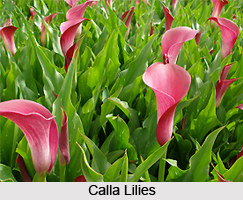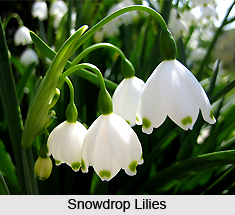A bulb plant literally means a tuber, rhizome, corm or a tree bulb. Bulbs in India are either fleshy stems or buds along or under the soil surface. They are an initial source of water and nourishment for the plant. Calla, Canna lily, Dahlia, Crocus, Snowdrop and Hyacinth are some of the popular bulb plants in India.
 Bulb plants in India have thickened underground storage organs commonly called bulbs. Not all bulbous plants produce true bulbs; other specialized underground storage organs include corms, tubers, tuberous roots and rhizomes. These enlarged storage organs are very often used in producing new plants.
Bulb plants in India have thickened underground storage organs commonly called bulbs. Not all bulbous plants produce true bulbs; other specialized underground storage organs include corms, tubers, tuberous roots and rhizomes. These enlarged storage organs are very often used in producing new plants.
A tuber is an underground stem and is fully buried in the ground. A rhizome is also a stem but it creeps along the ground surface. A corm is a solid underground bud. A true bulb is also an underground bud but has leaf scales instead of a solid body as in a corm. Some of the examples are dahlia, potato, and tuberous begonia of a tuber; canna and ginger of a rhizome; gladiolus and Acidanthera of a corn, and onions, lilies and Hippeastrum of a bulb. An iris can be a rhibozome, bulb or a corm. In general the word bulb has been used here to include others also.
True bulbs, like the Amaryllis, Crinum and Narcissus develop miniature bulbs, known as bulblets, which when grown to full size are known as offsets. Offsets can be separated from the mother bulb and replanted into beds.
 The number of growing seasons required for the offsets to reach flowering size will depend upon the kind of bulb and size of the offset. Some bulbs such as amaryllis, blood lily, hurricane lily and spider lily can be cut into several vertical sections and each section planted upright in a mixture of equal volumes of sand and peat. Bulblets will develop from the basal plate between the bulb scales. These can then be transplanted into beds to continue development.
The number of growing seasons required for the offsets to reach flowering size will depend upon the kind of bulb and size of the offset. Some bulbs such as amaryllis, blood lily, hurricane lily and spider lily can be cut into several vertical sections and each section planted upright in a mixture of equal volumes of sand and peat. Bulblets will develop from the basal plate between the bulb scales. These can then be transplanted into beds to continue development.
Indian corms such as gladiolus and watsonia produce new corms on top of the old corms, which wither. Miniature corms called cormels are produced between the old and new corms. These can be separated from the mother corms and stored along with the new corms over winter for planting in the spring. New corms usually produce flowers the first season, but cormels require 2 or 3 years of growth to reach flowering size.
Tubers, tuberous roots (dahlia, ranunculus) and rhizomes (Canna, daylily) are cultivated in India by cutting them into sections, each containing at least one bud. Special care should be taken when dividing dahlia tuberous roots to ensure that each tuberous root has a piece of crown bearing a healthy bud. Tuberous roots that are broken off without a bud are worthless.
Many bulb plants in India produce seeds that germinate and grow into flowering plants. This method of propagation is not very popular because many varieties today are hybrids, so flower color and type may be highly variable and results can`t be predicted. Dahlia and Lily are the most popular bulbs in India.











